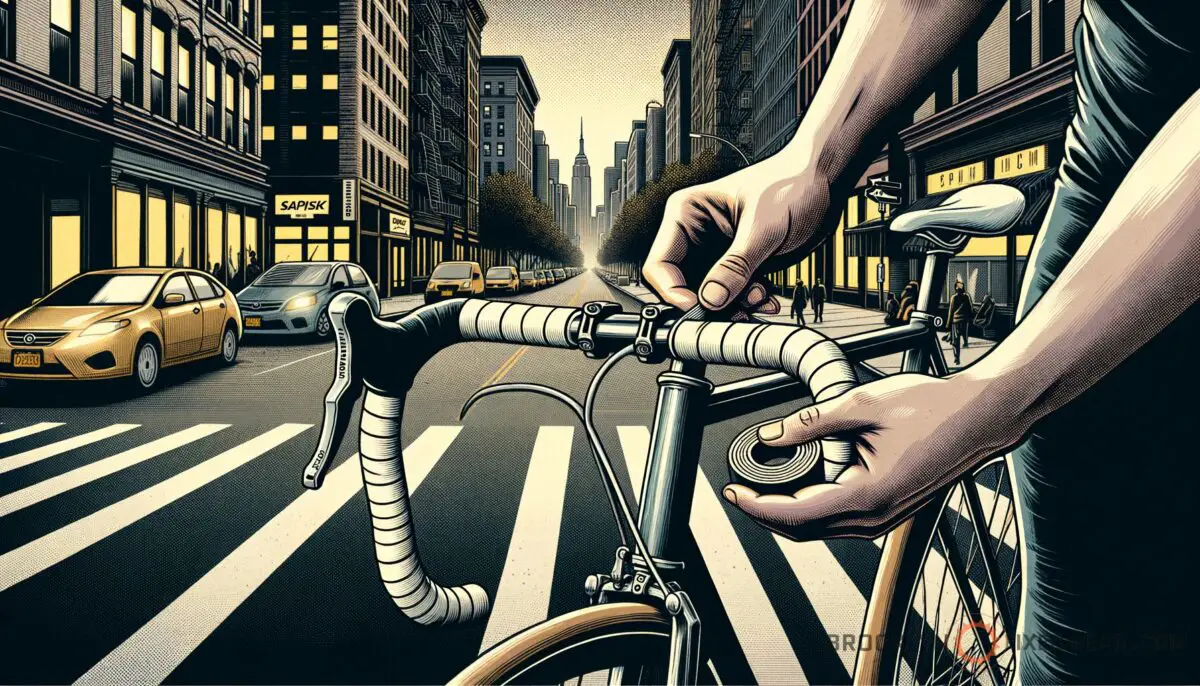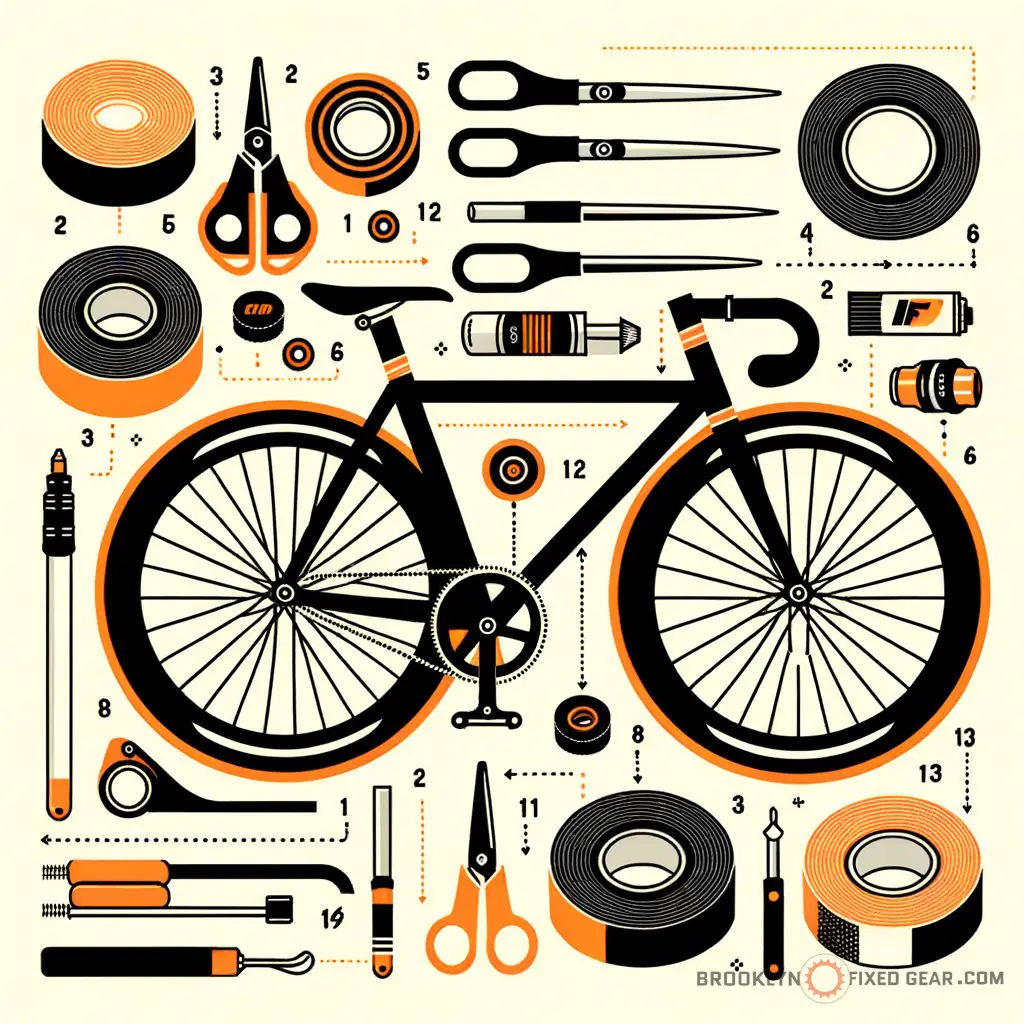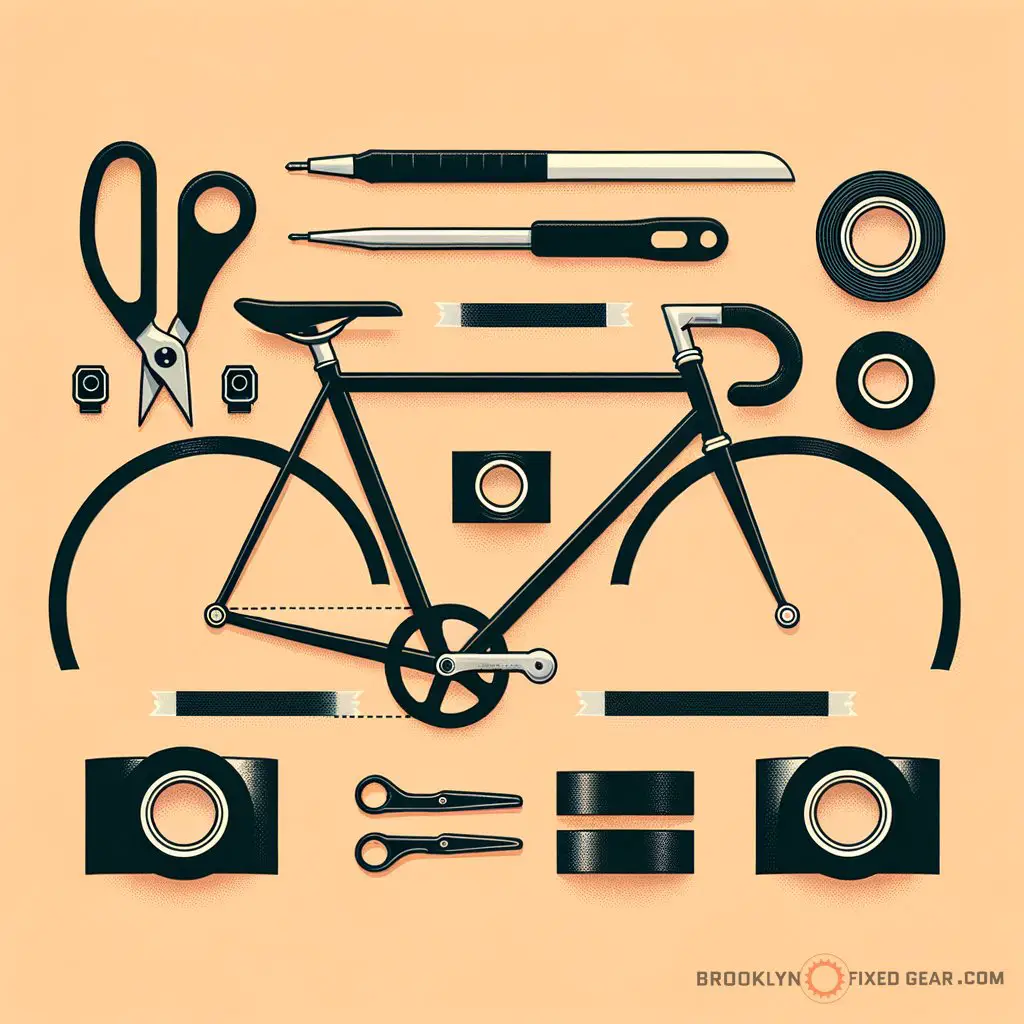Ever found yourself cruising down the avenues on your fixie, feeling the bond between you and your bike growing with every pedal stroke? It’s moments like these when the snag of a loose piece of handlebar tape can snap you right out of your two-wheeled trance. Have you ever wondered how to properly install handlebar tape? It’s a subtle art that can make or break your ride.
Check out some of the best fixie bikes to pair with your newfound wrapping skills. In this post, you’ll learn how to wrap your handlebars like a pro.
If you are a visual learner, check out this video titled ‘How To Tape Your Handlebars In The Figure Of 8 Style | Maintenance Monday’
Key takeaways
- Clean your handlebars before applying new tape for the best adhesion.
- Maintain even tension and consistent overlap for a professional finish.
- Become familiar with the do’s and don’ts to avoid common wrapping mistakes.
How to install handlebar tape
Wrapping handlebar tape is a rite of passage for any fixed-gear cyclist. Whether you’re gearing up for a crit or sprucing up your ride for the daily commute, a fresh tape job not only looks slick but also helps you maintain a good grip. Let’s get down to business and guide you through this transformation, step by step.

Step 1: Gather your materials
You’ll need the new handlebar tape, finishing tape or electrical tape, scissors or a cutting tool, and possibly end plugs if your new tape doesn’t come with them. A clean workspace ensures you won’t get dirt or grease on your new tape.
Step 2: Remove old tape
Carefully peel off the existing handlebar tape starting from the end closest to the stem. Remove any remaining adhesive and ensure your handlebars are clean and dry before you start with the new tape. This is your canvas, let’s keep it pristine.

Step 3: Start at the end
Most handlebar tapes will come with a small section of adhesive on the back. If yours does, peel the covering off this section and place it at the end of your handlebars. Make sure it’s secure before you start wrapping your handlebar tape around the handlebars.
Step 4: Wrap the tape
Start wrapping the tape around the handlebars from the end up towards the stem. You’ll want to have a consistent overlap of approximately one-quarter to one-third of the tape’s width with each wrap around the bar. Keep the tension even as you go.
Step 5: Navigate the bends
When you reach the brake levers, you’ll navigate a bit differently. You can either cut a separate piece to cover the clamps or continue wrapping in a figure-eight pattern around them. The goal is to avoid bulges and ensure complete coverage without any gaps.

Step 6: Finish near the stem
Once you’ve reached the stem, cut the tape at an angle that matches the edge of the handlebars for a clean look. Secure this last piece of handlebar tape with the finishing tape—stretch it slightly to ensure a snug fit, but be careful not to rip it.
Step 7: Seal the deal with end plugs
Finally, tuck the loose end of the handlebar tape inside the bar end and firmly press the end plug into place to secure everything. This will give your tape job a professional finish and prevent the tape from unraveling as you zoom through the streets.
State Bicycle Co. Black Label 6061

State Bicycle Co. Black Label 6061
More handlebar tape tips
When you’ve got your technique dialed, there are a few more things to consider to ensure your handlebar tape game is top-notch. Here are a few more tips:
- Always start with clean bars to give your tape the best chance of sticking firmly.
- Use electrical tape that matches the color of your handlebar tape for a seamless look.
- Consider wrapping a second layer of tape for extra cushioning on long rides or if you like more grip.
- If you live in a rainy area, look for tape with good water resistance to maintain grip in wet conditions.
As with any maintenance task, there are some definite dos and don’ts when it comes to wrapping handlebar tape.
| Do
| Don’t | | ——————————————– | —————————————— | | Do keep tension even throughout the process. |
Don’t stretch the tape too much. | | Do overlap consistently for a smooth wrap. | Don’t leave gaps, especially near the bend.| | Do finish with a straight cut against the bar.
| Don’t rush and create a ragged edge. | | Do tuck in the end of the tape before inserting the bar end plug. | Don’t leave loose tape at the ends.
|
Take your time and aim for a finish that’ll make your fixie stand out.
Advantages and disadvantages of installing handlebar tape
Wrapping handlebar tape well can be a satisfying job, bringing both comfort and style to your ride. It’s not all about looks; the right tape can influence your control over the bike.
Advantages
- Improved grip and control over your bike.
- Customization to match your style or bike aesthetics.
- Added comfort, reducing hand and arm fatigue.
- Protection for your handlebars from weather and wear.
Disadvantages
- It can be a bit time-consuming for beginners.
- Incorrect installation can lead to slips and reduced durability.
- High-quality tape can be a bit pricey, although it’s a worthy investment.
- Over time, handlebar tape can gather grime and needs to be replaced to maintain efficacy and style.
Wrapping handlebar tape is a subtle art that can make or break your ride. It’s not just about aesthetics—it’s about the bond between you and your trusty steed, the control you maintain, and the comfort you gain. Aim for a finish that’ll make your fixie the envy of the block.
In my opinion, installing handlebar tape isn’t just a maintenance task; it’s a personal touch, like signing a masterpiece. Choosing the tape that best suits your ride and wrapping it yourself can be immensely rewarding, and your hands will thank you on those long cruises around the city. A proper wrap job means you won’t have to worry about your grip slipping when you’re pushing hard or braking last minute at a traffic light.
Plus, it gives a killer custom look.
Let’s be clear; I’m no pro mechanic, but I’ve wrapped more handlebars than I can count, and each time it’s a chance to spice things up. I’ve made my share of mistakes, which you can read about and avoid in the do’s and don’ts of common mistakes made when building a fixie. Stick to a method and take your time, and you’ll be wrapping handlebars with your eyes closed…
well, not literally, but you get the drift.
Frequently asked questions (FAQ)
What’s the best way to wrap handlebars for someone with sweaty hands?
For those with sweaty palms, consider looking for tape with superior moisture-wicking properties or enhanced grip texture. Some tapes are designed with perforations or specific materials that allow for better breathability and moisture management. Giving your bars a good wrap with this type of tape will help keep your hands from slipping no matter how intense the ride gets.
Can I reuse my handlebar tape after removing it?
Generally, once handlebar tape is removed, it loses its adhesive quality and stretching it again can lead to tears and an uneven finish. It’s best to use fresh tape every time to ensure the best look and feel. If you’re cost-conscious, there are some budget-friendly options that don’t skimp on quality.
How usually should I replace my handlebar tape?
Replace your handlebar tape once it begins to show signs of wear, such as tearing, discoloration, or losing its cushiness. For regular riders, a good rule of thumb is to replace the tape once a year, but this can vary based on how usually you ride and the conditions you’re riding in. If you’re racking up the miles on your fixie, stay on top of this simple yet crucial maintenance.
Final thoughts
Wrapping handle bar tape is a craft—a mix of function and style that elevates the riding experience and showcases your personality on two wheels. Whether you’re rolling out for a casual ride or gearing up for race day, the right wrap can make all the difference. Remember, patience and attention to detail are your best tools when it comes to perfecting your handlebar tape wrap.
So there you have it—the ins, the outs, the do’s, and the don’ts of wrapping your handlebars.
Have you given handlebar tape wrapping a go? Did I cover everything you wanted to know?Let me know in the comments section below—I read and reply to every comment. If you found this article helpful, share it with a friend, and check out my full blog for more tips and tricks on handlebar tape installation. Thanks for reading and ride on with confidence!















